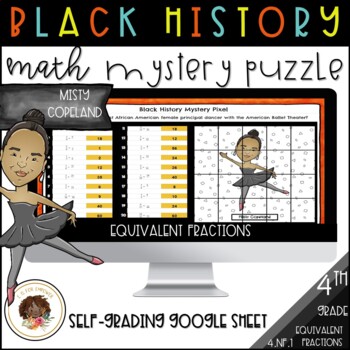Black History Math Mystery Puzzle-Misty Copeland - Equivalent Fractions 4.NF.1
- PDF
- Google Apps™

Description
Black History Math Mystery Pixel Puzzles are completely digital activities that are great for review! Students will complete math problems while learning about an African American leader! As students type their answers into the spaces, an image will appear in the space to the right. When all answers are correct and complete, the answer to the mystery will be revealed!
This resource is;
- Interdisciplinary
- Self-grading
- Paperless
- Interactive
Just assign a copy to each of your students on Google Classroom, and go! No prep!
Included is a PDF with links to the Black History Month activity, and the Answer Key.
If you're looking for Black History Month activities, this is a great way to acknowledge the accomplishments of African American people while incorporating some math practice. Don't limit these to February, they can be used all year long!
4th grade math skill covered in this activity:
4.NF.1 - Explain why a fraction a/b is equivalent to a fraction (n × a)/(n × b) by using visual fraction models, with attention to how the number and size of the parts differ even though the two fractions themselves are the same size. Use this principle to recognize and generate equivalent fractions.
If you find that there are any technology glitches or errors in this product, feel free to email me at EisforEmpower@gmail.com.


